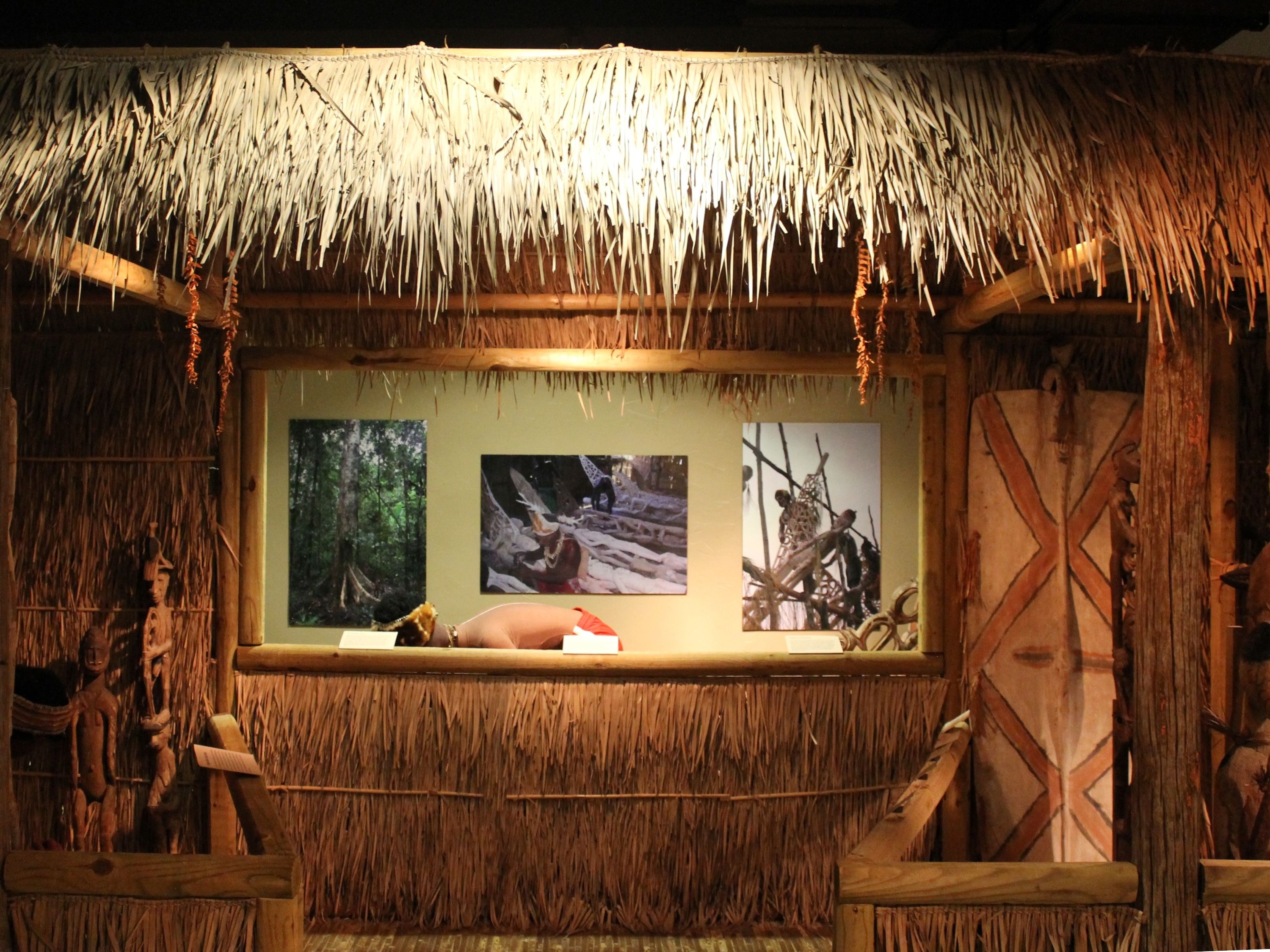Ritual of Revenge
Bis poles are central to the Asmat's idea of their association with trees. These poles are carved from fully grown mangrove trees that can be 15 to 20 feet high and are considered the most well known artistic achievement of the Asmat. They are created by the master carvers, known as "wow-ipits", and carved in an area of the Jeu called the Piva. Bis poles were traditionally made to honor a member of the community who had been killed during a head-hunting raid. They served as a pledge from the living to the dead relative that their death would soon be avenged. They also pay homage to the ancestors and bring harmony to the village. Head hunting is no longer practiced in the Asmat region, but bis poles are still extremely important in ceremonies and ritual life.
How Bis Pole Are Made
Choosing a Tree
When choosing a mangrove to make a bis pole, a well developed tree with a beautiful plank root is attacked as if it were an enemy to be headhunted. After it is cut down and the bark is removed, they cover the bare wood with red sap that looks like blood. The "killing" of the mangrove and the red sap is symbolic of dead ancestors. The trees are then ceremonially brought into the village, and the women treat the trees as if they were headhunted enemies. They are then brought into the jeu to be carved by Master Carvers called "wow ipits".
Carving a Bis Pole
A special area called a Piva is built onto the jeu to keep the poles hidden while they are carved. Carving the bis takes several weeks, and usually more than one pole is made for a ceremony. The main portion of the bis consists of at least one ancestor figure, with more figures standing on top of one another. When the carving is finished, the bis are covered with lime and decorated with grooves representing painted body decorations. The bones of arms and legs are painted red.
Display and Disposal
Bis poles are carried outside the jeu for the concluding ceremony where villagers mourn their ancestors whose spirits were called into the carvings. Men then boast of their skill in warfare and call out the names of their victims. The main purpose of the ritual is to remember and honor the ancestors. After the poles are displayed they are taken to the forest and left to decay, because their supernatural power is thought to promote the growth of sago trees. In some coastal villages the bis are used to replace the left front pole of the family hearth in the jeu.


